Lactarius aurantiacus (Pers.) Gray - Orange Milkcap
Phylum: Basidiomycota - Class: Agaricomycetes - Order: Russulales - Family: Russulaceae
Distribution - Taxonomic History - Etymology - Identification - Culinary Notes - Reference Sources
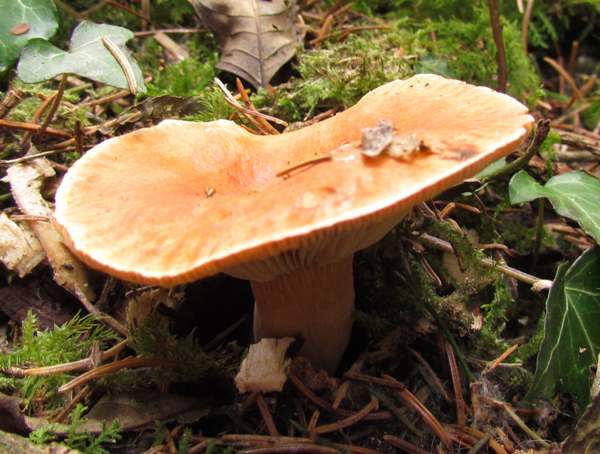
Lactarius aurantiacus, the Orange Milkcap, is found in great abundance beneath spruce, pine and occasionally birch trees in areas where the soil is acidic.
Distribution
An occasional find but widespread in Britain and Ireland, the Orange Milkcap occurs also throughout much of mainland Europe. This little mushroom tends to occur either solitarily or in quite small scattered groups.
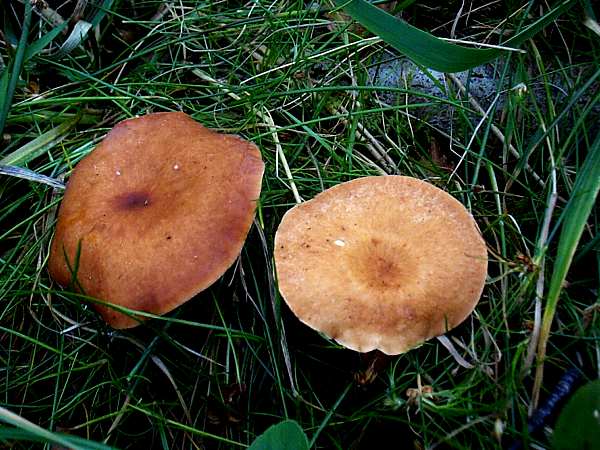
Taxonomic history
The Orange Milkcap was described in 1801 by Christiaan Hendrik Persoon, who established its basionym when he named it Agaricus testaceus var. aurantiacus. It was British mycologist Samuel Frederick Gray (1766-1828) who in 1821 transferred this species to the genus Lactarius, thus establishing its currently-accepted scientific name as Lactarius aurantiacus.
Synonyms of Lactarius aurantiacus include Agaricus testaceus var. aurantiacus Pers., Agaricus aurantiacus (Pers.) J.Otto, Agaricus mitissimus Fr., Lactarius mitissimus (Fr.) Fr., and Lactarius aurantiofulvus J. Blum ex Bon.
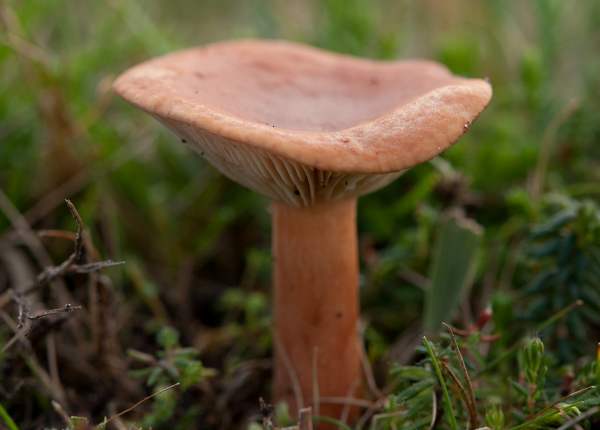
Etymology
The generic name Lactarius means producing milk (lactating) - a reference to the milky latex that is exuded from the gills of milkcap fungi when they are cut or torn.
The specific epithet aurantiacus comes from Latin and means orange (the colour, not the fruit).
Identification guide
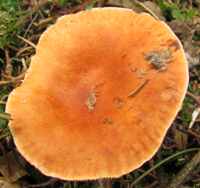 |
Cap1 to 5cm in diameter, low convex to plane with a slightly depressed centre; surface is smooth, dry and slightly glossy. |
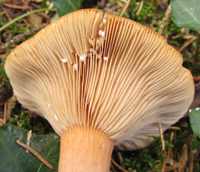 |
GillsThe moderately spaced pinkish buff gills are broadly adnate to shortly decurrent. The latex is white and has a mild or only slightly bitter taste. Stem2.5 to 6.5cm tall and 5 to12mm diameter, cylindrical or slightly clavate; smooth; brownish orange. There is no stem ring. |
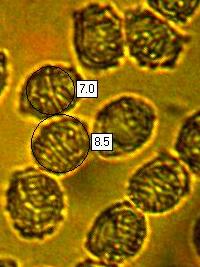 |
SporesSubspherical to broadly ellipsoidal, 8-9.5 x 6-7.5µm; ornamented with low amyloid warts (up to 1µm tall) and a few cross connections that do not form a complete network. Spore printIvory. |
Odour/taste |
Faint but unpleasant dour; a fairly mild or only slightly bitter taste (some say of radish) that does not become acrid later. |
Habitat & Ecological role |
Mycorrhizal, in coniferous and deciduous woodland; also occasionally reported with dwarf willow in coastal dune slacks. |
Season |
July to November in Britain and Ireland. |
Similar species |
Lactarius fulvissimus is very similar but there is a decurrent tooth to its gills; it has an unpleasant odour and a more cream-coloured spore print. Lactarius subdulcis is a smaller milkcap of
similar coloration; it occurs under beech trees. |
Culinary Notes
These colourful milkcap mushrooms are far too hot to be considered edible; however, in some eastern European countries they are dried and used as seasoning.
Reference Sources
Pat O'Reilly (2016). Fascinated by Fungi, First Nature Publishing
Jacob Heilmann-Clausen, Annemieke Verbeken, & Jan Vesterholt (1998). The Genus Lactarius (Fungi of Northern Europe—Vol. 2) The Danish Mycological Society.
Funga Nordica, Henning Knudsen and Jan Vesterholt, 2008.
Fungi of Switzerland, volume 6: Russulaceae, Kränzlin, F.
BMS List of English Names for Fungi.
Paul M. Kirk, Paul F. Cannon, David W. Minter and J. A. Stalpers. (2008). Dictionary of the Fungi; CABI.
Taxonomic history and synonym information on these pages is drawn from many sources but in particular from the British Mycological Society's GB Checklist of Fungi.
Fascinated by Fungi. Back by popular demand, Pat O'Reilly's best-selling 450-page hardback book is available now. The latest second edition was republished with a sparkling new cover design in September 2022 by Coch-y-Bonddu Books. Full details and copies are available from the publisher's online bookshop...

